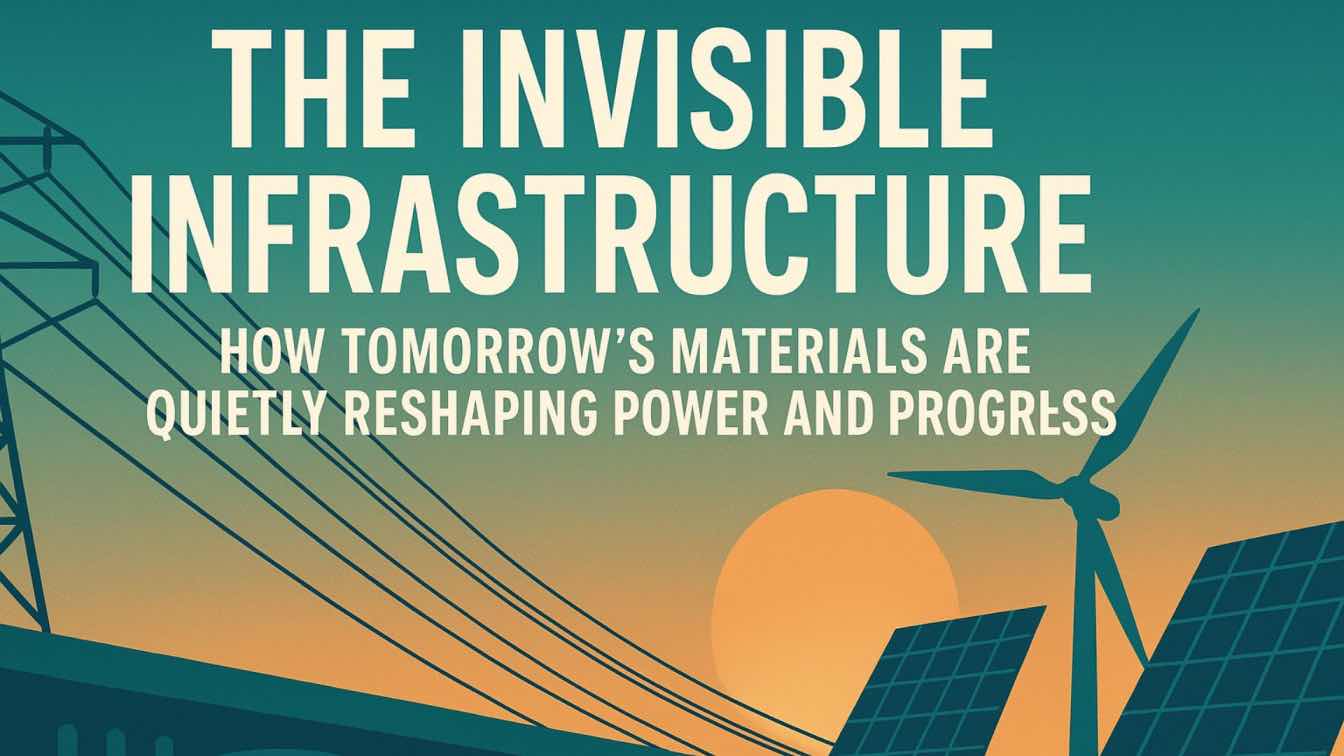If the future of energy were a stage, then it wouldn't be the solar farms or wind turbines hogging the spotlight. The real showstoppers might just be the silent actors working behind the scenes: the materials themselves. These are the polymers, composites, and microscopically engineered components that don’t make headlines but shape entire industries. As nations around the world race to meet climate goals, a quieter, more radical transformation is unfolding at the core of how we design, build, and power our lives. We're rethinking infrastructure not as concrete and steel alone, but as a fluid convergence of innovation and material science. This evolution isn't just technical; it's philosophical. We're no longer just asking, "How do we generate more power?" Instead, we're starting to ask, "How do we build systems that adapt, regenerate, and support sustainability and growth from the inside out?"
Outdated Views of Energy Infrastructure
We often think of infrastructure in physical terms: roads, bridges, pipelines, and towering electrical pylons. They're visible. They're massive. They feel permanent. And perhaps most dangerously, we assume they're the only things that matter. This mindset traps us in outdated frameworks where progress is measured by what we can see, not what we can evolve.
But real innovation often starts where no one is looking. Take additive manufacturing—commonly known as 3D printing. Once seen as a novelty for designers and hobbyists, it now sits at the heart of transformative shifts in energy systems. Think turbine blades engineered at microscopic scales for efficiency, or solar panel frames redesigned for lightness and adaptability. What makes this possible? Materials. Specifically, advanced polymers.
In the background of these changes, companies are pioneering new ways to use 3d printing plastics to push boundaries once thought immovable. Unlike traditional materials that rely on extraction-heavy supply chains, these polymers offer modularity, sustainability, and exceptional performance under stress. They're being used to create components that are lighter, stronger, and customizable on demand—a massive win for sectors struggling with supply volatility and environmental constraints.
Yet, despite these leaps, the perception persists: that progress only comes with a crane and a crew. In reality, the blueprint for tomorrow's energy isn't being drawn on drafting tables—it's being printed in layers, coded in molecules, and tested under extreme conditions before a single bolt hits the ground.
Materials as Engines of Change
To understand the future, we need to shift from asking "What can we build?" to "What can we build with?" It's a subtle but radical change in perspective. Materials aren't just passive enablers; they are active participants in shaping design and performance.
Consider the role of sustainable polymers in reducing the carbon footprint of energy infrastructure. Unlike metals that require high-temperature processing and extensive mining, advanced polymers can be developed using renewable feedstocks and fabricated with minimal waste. Some are even engineered for recyclability or biodegradation, aligning directly with the principles of circular economies. As a result, they're emerging as keystones in bridging industrial production with environmental responsibility.
This material revolution isn't just about energy devices either. It includes thermal storage units that maintain efficiency over longer periods, or next-generation fuel cells built with multi-material additive manufacturing. Such developments dramatically extend the life and adaptability of power systems. They're also enabling decentralized energy solutions—portable microgrids, scalable batteries, and autonomous maintenance tools—that reduce dependence on centralized utilities.
In effect, the invisible infrastructure becomes the real infrastructure. It's in the parts that extend operational life. It's in the materials that handle higher stress with lower emissions. It's in the way we now design not just for use, but for evolution.
Strategic Foresight Built on Materials
Still, the deepest shift may not be technological at all—it’s strategic. As industries grapple with uncertainty in policy, climate, and supply chains, the most resilient players are investing not in what’s trending, but in what’s adaptable. That adaptability increasingly relies on expertise that bridges engineering, environment, and foresight. This is where energy transition consulting comes into play.
These consulting services act as the connective tissue between scientific breakthroughs and actionable infrastructure. They don't just advise on greener energy; they redesign energy pathways by incorporating insights from polymer innovation, additive manufacturing, and real-time data modeling. It's a nuanced approach that sees materials not as cost centers, but as strategic levers.
And therein lies the real power: foresight built into the foundation. When consulting aligns with material science, we get smarter grids, lighter assets, and more agile development cycles. We get systems designed to scale sustainably, not just operate efficiently.
Designing for What Comes Next
If there’s a takeaway from this shift, it's this: what we don't see matters more than ever. The path to sustainability and growth isn't paved with silver-bullet technologies or grand-scale structures. It's layered into the materials we choose, the tools we use, and the insights we trust. When we reframe infrastructure as a living, evolving ecosystem—built quietly through innovation in material science and strategy—we don't just build better. We build smarter. The future isn't being constructed on the skyline; it's being formed in labs, data models, and digital printers. And it’s moving fast, whether we’re watching or not.





